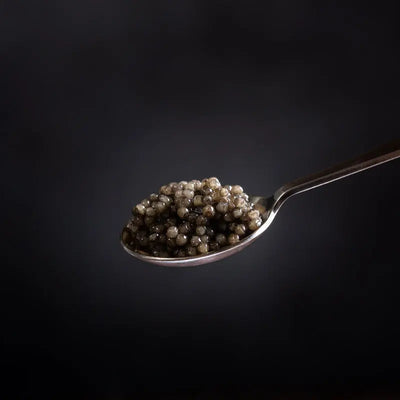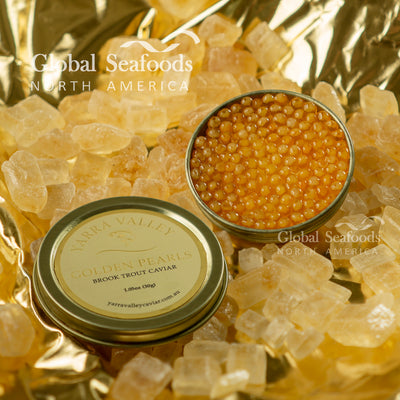+Shop Now
+Categories
- Abalone
- Ahi Tuna
- Alaskan King Crab Legs
- Alaskan Pollock
- Alaskan Sockeye Salmon
- Albacore Tuna
- Anchovy
- Anxiety Relief
- appetizer
- Atlantic Salmon
- Beluga Caviar
- Best Sushi
- black caviar
- black cod
- Blue crabs
- Bluefin Tuna
- Brain Function
- Branzino
- breakfast
- Calamari
- caviar
- Caviar Recipes
- Chef Knives
- Chilean Sea Bass
- Clams
- cocktail caviar
- Cod
- Coho Salmon Caviar
- collagen
- Cooking Methods
- crab
- Crab Balls
- Crab Cakes
- Crab claws
- crab meat
- Crab Recipes
- culinary tips
- decline-sturgeon
- Diver Scallops
- Dover Sole
- Dry Aged Fish
- Dungeness Crab
- Dungeness crab clusters
- Dungeness Crab Legs
- Exotic Shellfish Sampler
- Fish and Seafood
- fish oil
- Fish Sauce
- flat fish
- FLOUNDER FISH
- Focus
- Fresh Seafood Delivery
- Fresh Wild Alaskan Salmon
- Geoduck
- Gooseneck Barnacles
- Gourmet Seafood Platter
- haddock
- halibut
- Halibut Recipes
- hamachi
- Hamachi Recipe
- health
- healthy eating
- Ikura
- Japanese restaurants
- Jonah crab
- Jumbo Sea Scallops
- Kaluga Caviar
- kelp
- king crab
- King Crab Legs
- King Salmon
- kitchen
- Lingcod
- Live King Crab
- Live Lobsters for Sale
- Live Scallops
- Live seafood
- lobster
- Lobster Tail
- luxury food
- mahi mahi
- Marine Collagen
- Mollusk
- Monkfish
- Mussels
- New
- Nutrition
- octopus
- Opah
- Ora King Salmon
- Osetra Caviar
- Ossetra Sturgeon Caviar
- oysters
- Pacific Cod
- Pacific Hake
- Pacific Halibut
- Pacific Ocean
- Pacific Whiting
- Pacific Whiting Recipe
- Paddlefish Caviar
- Petite Oysters
- Petrale Sole
- Poke Tuna
- Pollock
- Pregnancy
- Premium Caviar Selection
- Recipe
- red caviar
- Red Crab
- rock fish
- Rockfish
- Rockfish Recipes
- sablefish
- Sablefish (Black Cod) Recipes
- salmon
- Salmon Caviar
- Salmon lox
- Salmon Poke
- Salmon Recipes
- salmon roe
- Sardines
- Sashimi
- Sashimi-Grade Tuna
- Scallop
- scallops
- Scallops Recipe
- Sea Urchi Recipe
- sea urchin
- Sea Urchin Sushi
- sea weed
- Seafood
- Seafood Dishes
- Seafood Market
- Seafood Recipe
- Seafood Restaurants
- sevruga caviar
- shellfish
- Shrimps & Prawns
- Silver Salmon
- Smoked
- Smoked Salmon
- Smoked Tuna
- Snail Caviar
- Snapper Recipe
- snow crab
- Sole & Flounder Recipes
- Squid
- Steelhead
- Sturgeon Caviar
- Sustainable Seafood Choices
- Swordfish
- Tilapia
- Tilapia Fish
- Tobiko
- Trout
- tuna
- Tuna Recipe
- weathervane scallops
- white fish
- White Sturgeon
- White Sturgeon Caviar
- Whiting Fish
- Wild Caught Shrimp
- Yellowfin Tuna
- Yellowtail snapper
A Gourmet Journey Into the Rich Flavors of Salmon Caviar
January 03, 2025

The Allure of Salmon Caviar
Salmon caviar, often called "red caviar," is a prized delicacy that adds a touch of luxury to any dining experience. Renowned for its vibrant orange-red hue and burst of briny flavor, salmon caviar offers a culinary adventure that combines rich history, health benefits, and gourmet appeal.
In this guide, we’ll explore what makes salmon caviar so unique, delve into its health benefits, and provide tips for enjoying this gourmet delight in the most satisfying ways.
What Is Salmon Caviar?
Salmon caviar is the roe (eggs) harvested from salmon species like chum, pink, or coho. Unlike black caviar from sturgeon, salmon caviar boasts a distinct, bold flavor and a pop that delights the palate.
Types of Salmon Caviar
- Chum Salmon Caviar: Known for its large, firm eggs and mild flavor.
- Coho Salmon Caviar: Smaller eggs with a rich, buttery taste.
- Pink Salmon Caviar: A more affordable option with a delicate flavor profile.
Quote: "Caviar is the symbol of indulgence, and salmon caviar brings that luxury to more tables," says Chef René Redzepi.
Explore premium options:
Health Benefits of Salmon Caviar
Salmon caviar isn’t just a treat for the taste buds—it’s also a nutritional powerhouse.
Key Benefits
- Rich in Omega-3 Fatty Acids: Supports heart health and brain function.
- High in Protein: A complete source of essential amino acids.
- Packed with Vitamins: Contains vitamins B12, D, and E for overall wellness.
- Low in Calories: Perfect for indulgence without guilt.
Tip: Incorporate salmon caviar into your diet to boost your intake of essential nutrients while enjoying a gourmet experience.
How to Serve Salmon Caviar
Salmon caviar shines when paired with complementary flavors and textures.
Traditional Serving Ideas
- On Blinis: Top small pancakes with crème fraîche and caviar for a classic presentation.
- With Toast Points: A luxurious appetizer when served on buttery toast.
- In Sushi: A favorite ingredient in rolls and sashimi dishes.
Innovative Pairings
- Salmon Caviar with Eggs: Sprinkle over scrambled eggs for a breakfast upgrade.
- Caviar Canapés: Use as a topping for cucumber slices or crackers.
- Champagne Pairing: Enhance the flavors with a chilled glass of bubbly.
For more serving inspiration, visit our YouTube Channel.
Where to Buy the Best Salmon Caviar
For the finest quality, shop with trusted suppliers like Global Seafoods. Our premium collection includes:
Storing and Handling Salmon Caviar
Proper storage ensures the best flavor and texture:
- Refrigeration: Store between 28°F and 32°F.
- Consume Quickly: Enjoy within 3–5 days of opening.
- Avoid Freezing: Freezing can compromise texture.
FAQs About Salmon Caviar
Q: Is salmon caviar sustainable?
A: Yes, many suppliers offer sustainably sourced salmon caviar. Always look for certifications to ensure ethical practices.
Q: How does salmon caviar compare to sturgeon caviar?
A: While sturgeon caviar is often more expensive, salmon caviar offers a bold, briny flavor at a more accessible price point.
Q: Can I cook with salmon caviar?
A: Salmon caviar is best enjoyed raw to preserve its texture and flavor. Use as a garnish for hot dishes instead of cooking directly.
Conclusion: The Luxury of Salmon Caviar
Salmon caviar is more than a culinary indulgence; it’s a symbol of refined taste and a gateway to gourmet dining. Whether you’re hosting a special occasion or simply elevating your everyday meals, salmon caviar is the perfect choice.
Explore the Best of Salmon Caviar
Elevate your dining experience with salmon caviar today! For more insights, tips, and recipes, visit our YouTube Channel.
Related Products
Share:
Also in News

How to Make Sea Bream Sushi With Dry-Aged Tuna & Crab Roll — Step-by-Step With Chef Joshua
December 07, 2025
A complete guide to making Sea Bream sushi at home, including filleting, curing, slicing, and building a Dry-Aged Tuna & Crab sushi roll. Chef Joshua shares professional tips for restaurant-quality results.

Boiled Crab for Game Night: Everything You Need for a Perfect Seafood Party
June 27, 2025
Take your game night to the next level with a Boiled crab party. Learn the best recipes, cooking tips, and hosting hacks for a memorable seafood feast.

Boiled Crab for Date Night: A Romantic Guide to the Perfect Seafood Feast
June 27, 2025
Make your next date night unforgettable with a romantic Boiled crab experience. This guide covers everything you need to know, from ambiance to the best crab varieties.
+Shop Now
+Categories
- Abalone
- Ahi Tuna
- Alaskan King Crab Legs
- Alaskan Pollock
- Alaskan Sockeye Salmon
- Albacore Tuna
- Anchovy
- Anxiety Relief
- appetizer
- Atlantic Salmon
- Beluga Caviar
- Best Sushi
- black caviar
- black cod
- Blue crabs
- Bluefin Tuna
- Brain Function
- Branzino
- breakfast
- Calamari
- caviar
- Caviar Recipes
- Chef Knives
- Chilean Sea Bass
- Clams
- cocktail caviar
- Cod
- Coho Salmon Caviar
- collagen
- Cooking Methods
- crab
- Crab Balls
- Crab Cakes
- Crab claws
- crab meat
- Crab Recipes
- culinary tips
- decline-sturgeon
- Diver Scallops
- Dover Sole
- Dry Aged Fish
- Dungeness Crab
- Dungeness crab clusters
- Dungeness Crab Legs
- Exotic Shellfish Sampler
- Fish and Seafood
- fish oil
- Fish Sauce
- flat fish
- FLOUNDER FISH
- Focus
- Fresh Seafood Delivery
- Fresh Wild Alaskan Salmon
- Geoduck
- Gooseneck Barnacles
- Gourmet Seafood Platter
- haddock
- halibut
- Halibut Recipes
- hamachi
- Hamachi Recipe
- health
- healthy eating
- Ikura
- Japanese restaurants
- Jonah crab
- Jumbo Sea Scallops
- Kaluga Caviar
- kelp
- king crab
- King Crab Legs
- King Salmon
- kitchen
- Lingcod
- Live King Crab
- Live Lobsters for Sale
- Live Scallops
- Live seafood
- lobster
- Lobster Tail
- luxury food
- mahi mahi
- Marine Collagen
- Mollusk
- Monkfish
- Mussels
- New
- Nutrition
- octopus
- Opah
- Ora King Salmon
- Osetra Caviar
- Ossetra Sturgeon Caviar
- oysters
- Pacific Cod
- Pacific Hake
- Pacific Halibut
- Pacific Ocean
- Pacific Whiting
- Pacific Whiting Recipe
- Paddlefish Caviar
- Petite Oysters
- Petrale Sole
- Poke Tuna
- Pollock
- Pregnancy
- Premium Caviar Selection
- Recipe
- red caviar
- Red Crab
- rock fish
- Rockfish
- Rockfish Recipes
- sablefish
- Sablefish (Black Cod) Recipes
- salmon
- Salmon Caviar
- Salmon lox
- Salmon Poke
- Salmon Recipes
- salmon roe
- Sardines
- Sashimi
- Sashimi-Grade Tuna
- Scallop
- scallops
- Scallops Recipe
- Sea Urchi Recipe
- sea urchin
- Sea Urchin Sushi
- sea weed
- Seafood
- Seafood Dishes
- Seafood Market
- Seafood Recipe
- Seafood Restaurants
- sevruga caviar
- shellfish
- Shrimps & Prawns
- Silver Salmon
- Smoked
- Smoked Salmon
- Smoked Tuna
- Snail Caviar
- Snapper Recipe
- snow crab
- Sole & Flounder Recipes
- Squid
- Steelhead
- Sturgeon Caviar
- Sustainable Seafood Choices
- Swordfish
- Tilapia
- Tilapia Fish
- Tobiko
- Trout
- tuna
- Tuna Recipe
- weathervane scallops
- white fish
- White Sturgeon
- White Sturgeon Caviar
- Whiting Fish
- Wild Caught Shrimp
- Yellowfin Tuna
- Yellowtail snapper
Shop Now
Main
News & Updates
Sign up to get the latest on sales, new releases and more…
© 2025 Global Seafoods North America.










